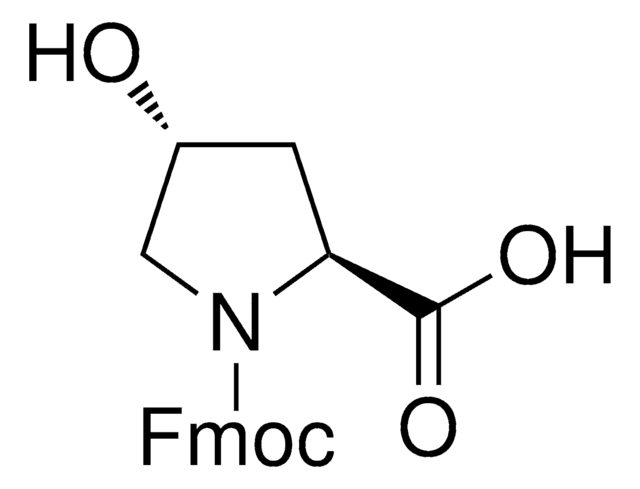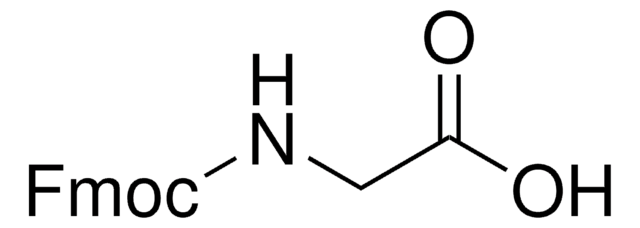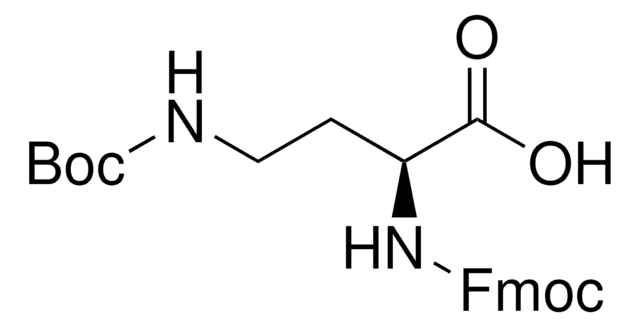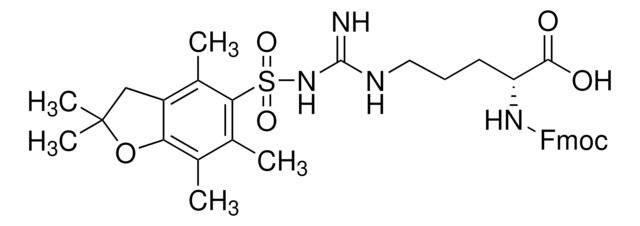47517
Fmoc-Hyp(tBu)-OH
≥98.0% (HPLC)
Synonyme(s) :
Fmoc-O-tert-butyl-L-hydroxyproline
About This Item
Produits recommandés
Essai
≥98.0% (HPLC)
Activité optique
[α]20/D −25±2.5°, c = 1% in methanol
Capacité de réaction
reaction type: Fmoc solid-phase peptide synthesis
Application(s)
peptide synthesis
Groupe fonctionnel
Fmoc
Température de stockage
2-8°C
Chaîne SMILES
CC(C)(C)O[C@@H]1C[C@H](N(C1)C(=O)OCC2c3ccccc3-c4ccccc24)C(O)=O
InChI
1S/C24H27NO5/c1-24(2,3)30-15-12-21(22(26)27)25(13-15)23(28)29-14-20-18-10-6-4-8-16(18)17-9-5-7-11-19(17)20/h4-11,15,20-21H,12-14H2,1-3H3,(H,26,27)/t15-,21+/m1/s1
Clé InChI
WPBXBYOKQUEIDW-VFNWGFHPSA-N
Code de la classe de stockage
11 - Combustible Solids
Classe de danger pour l'eau (WGK)
WGK 3
Point d'éclair (°F)
Not applicable
Point d'éclair (°C)
Not applicable
Équipement de protection individuelle
Eyeshields, Gloves, type N95 (US)
Faites votre choix parmi les versions les plus récentes :
Déjà en possession de ce produit ?
Retrouvez la documentation relative aux produits que vous avez récemment achetés dans la Bibliothèque de documents.
Les clients ont également consulté
Articles
Proline analogues are promising candidates for tuning the biological, pharmaceutical, or physicochemical properties of naturally occuring, as well as de novo designed, linear, and, cyclic peptides.
Notre équipe de scientifiques dispose d'une expérience dans tous les secteurs de la recherche, notamment en sciences de la vie, science des matériaux, synthèse chimique, chromatographie, analyse et dans de nombreux autres domaines..
Contacter notre Service technique









